
25 Feb, 2020
Intensive Thai coronavirus prevention campaigns producing results
Bangkok – The number of new COVID-19 cases has remained unchanged at 35 in the nine-day period between Feb 17-25, official statistics show. Meanwhile, the number of recovered cases has risen from 15 to 21 in the same period, with not a single death.
These figures below, compiled and distributed by the Ministry of Tourism and Sports crisis centre based on stats from the Ministry of Public Health, show that Thailand’s vigorous preventive measures are producing results. From fever-sensor testing at the international airports to saturation awareness campaigns across all forms of Thai mainstream and social media, Thailand has gone all out to rein in the spread.
By the evening of Feb 25, two more new cases had been discovered, raising the number to 37. However, statistically, it did not alter the fact that foreign visitors to Thailand have virtually nothing to fear as long they follow the basic health safety guidelines.
Since the start of the crisis, prevention campaigns have swung into place, with government agencies such as the Ministry of Foreign Affairs, Ministry of Tourism and Sports and Ministry of Public Health issuing daily updates to counter the circulation of rumours and social-media claims of a cover-up.
The number of cases in Thailand is remarkably low given the fact that the kingdom is one of the most popular destinations for Chinese travellers, with total arrivals of 11 million in 2019, or about 27% of the total. This year, the flow of Chinese visitors has shrunk. Numerous other source-markets have been hit by news of foreign governments taking draconian actions such as bans on their citizens visiting Thailand and quarantining Thai visitors to their countries.
But the statistical trend during the Feb 17-25 period shows that the fears are unfounded in the case of Thailand. Other countries are reporting far worse situations. Readers can check out the figures for themselves:

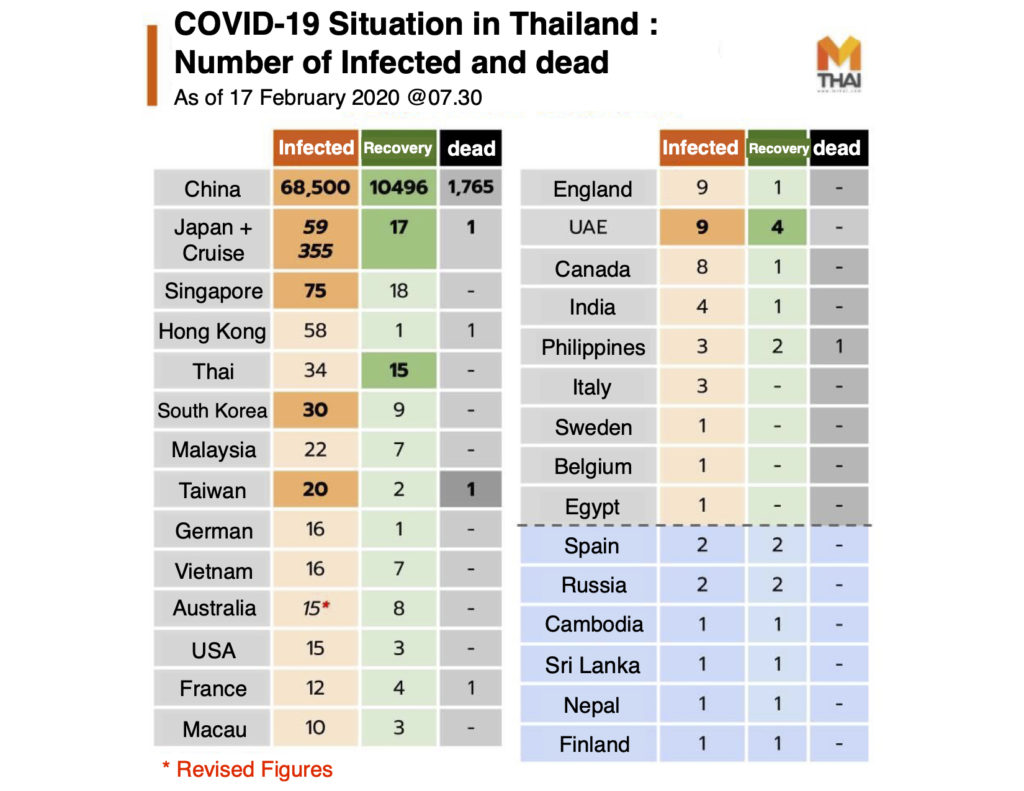
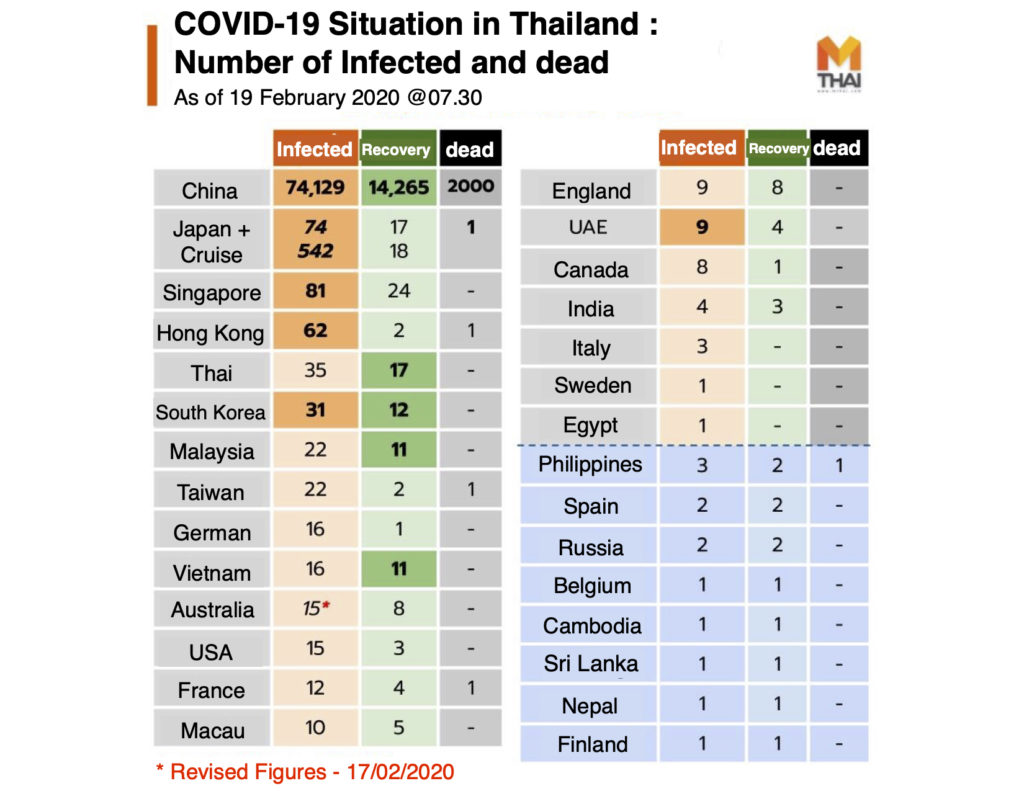
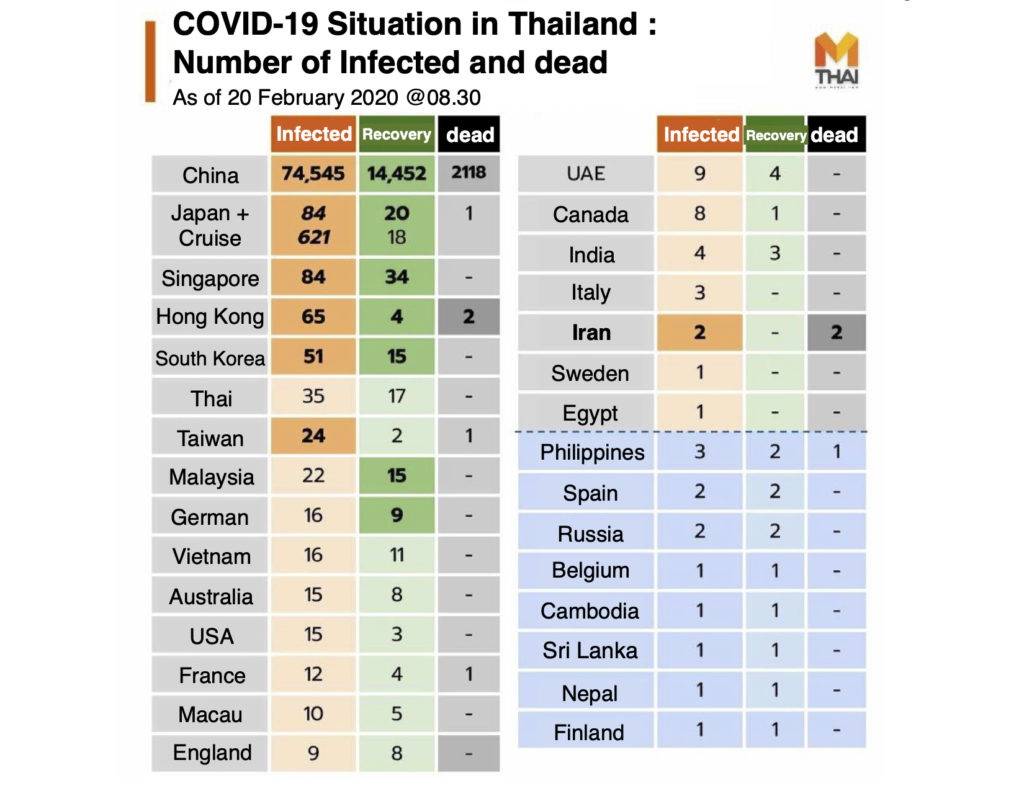
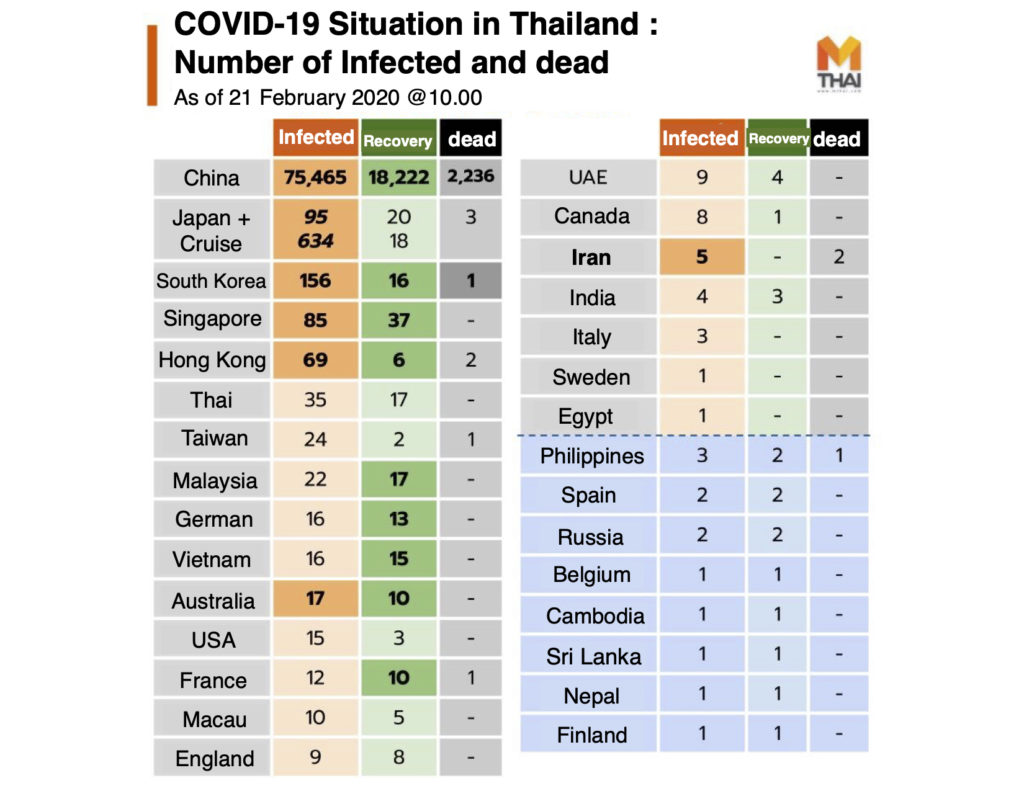
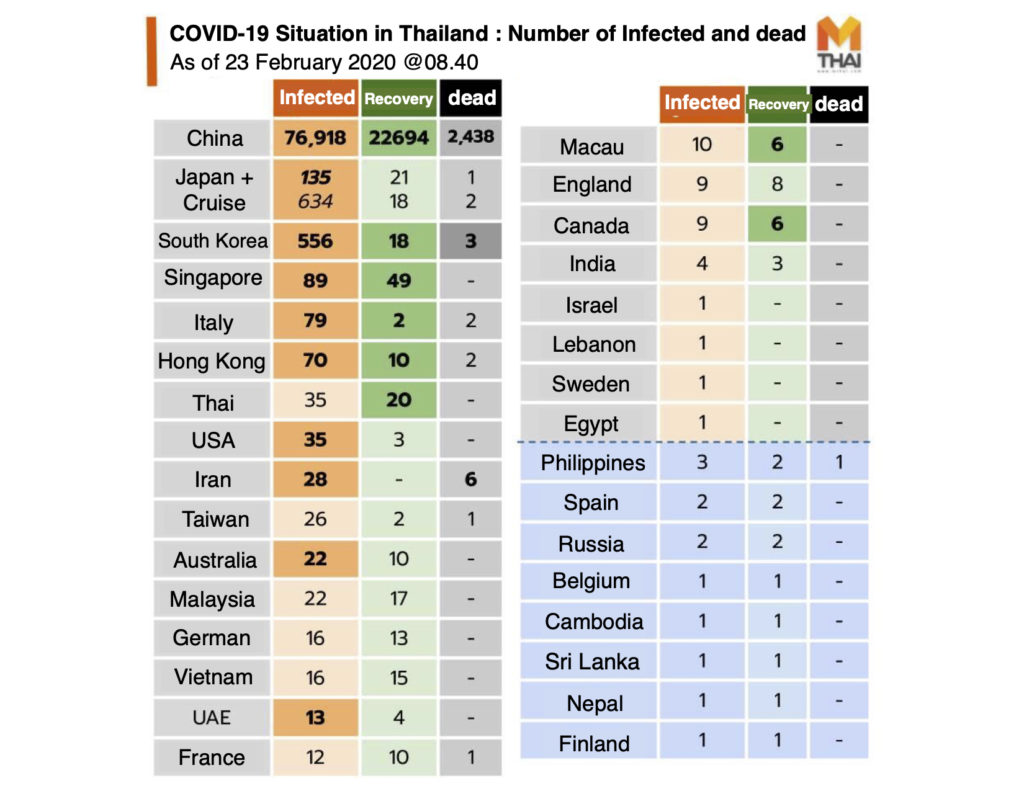
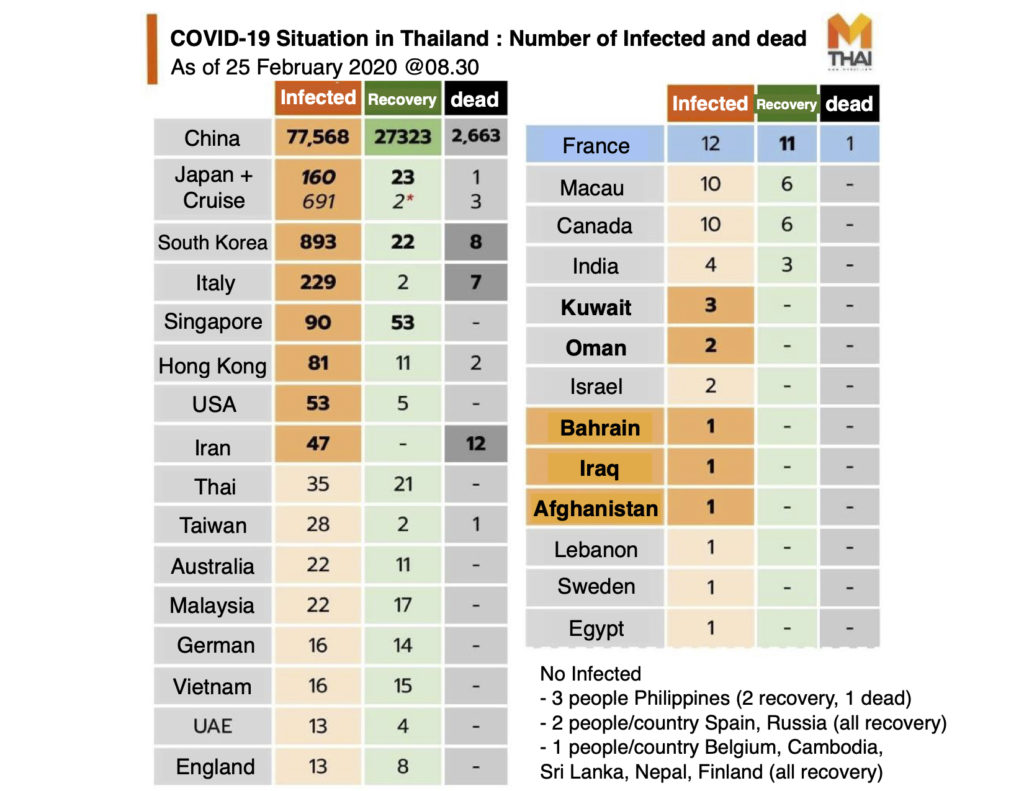


Liked this article? Share it!